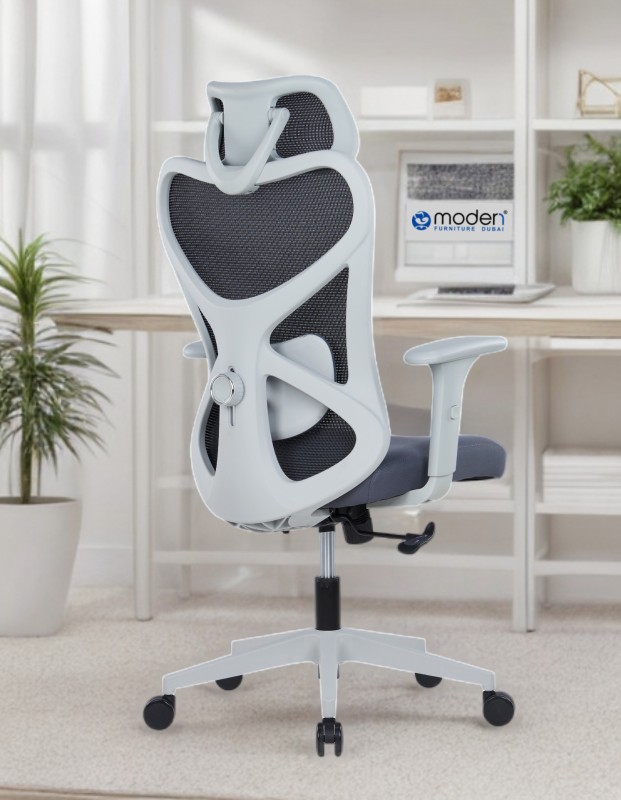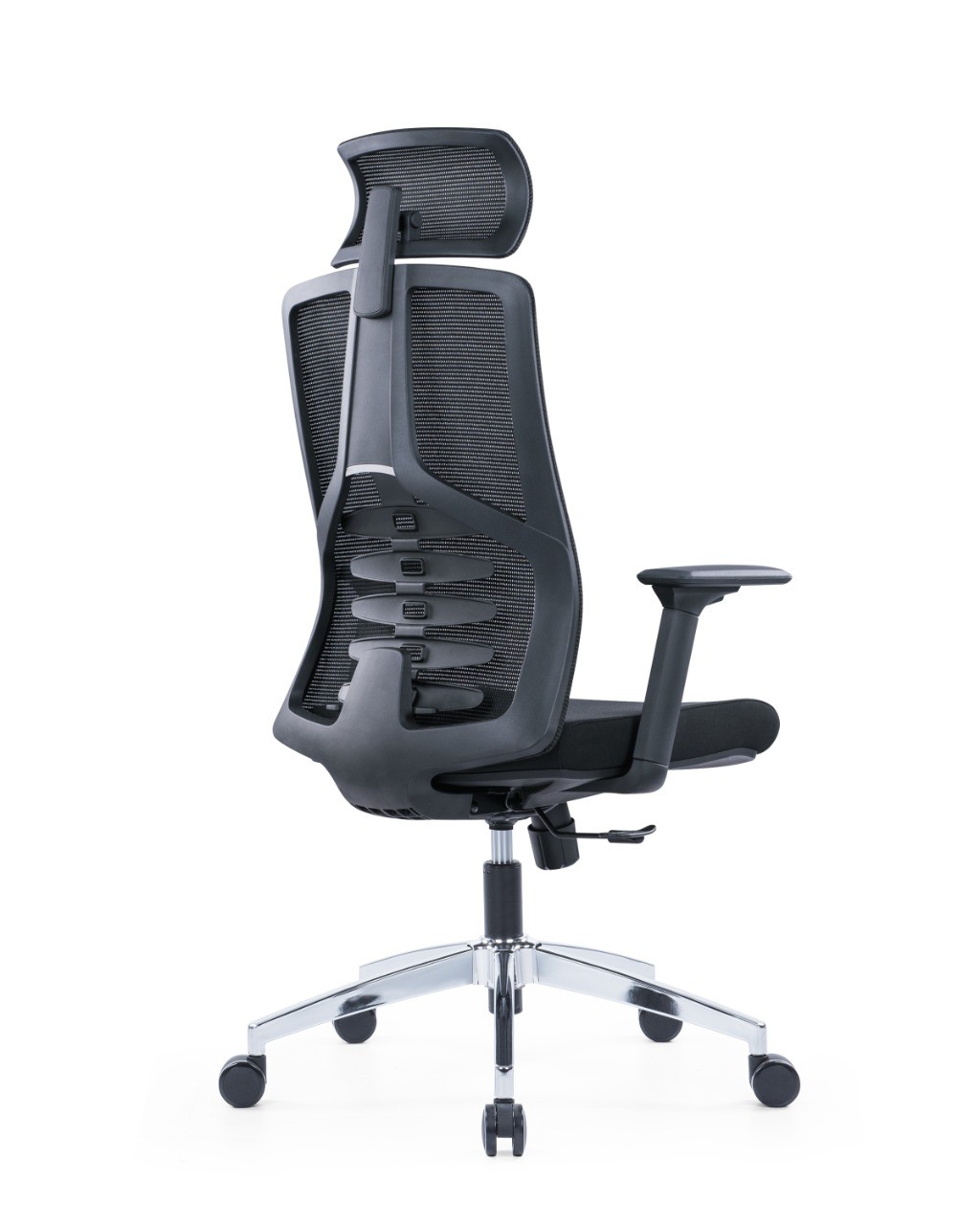
Best Office Chairs for People with Long Legs or Height Challenges
Introduction
For tall individuals or those with longer legs, finding the right office chair can be a challenge. Standard office chairs often lack the necessary seat depth, height adjustability, and ergonomic design to support taller frames comfortably. Without proper support, long-legged users may experience leg fatigue, poor circulation, or chronic back and knee discomfort. This article focuses on office chairs that are built to accommodate height challenges, offering greater legroom, seat height options, and posture-aligned backrests. If you often find yourself cramped or slouching in a standard chair, it may be time to upgrade to one designed with your height in mind.
1. Why Seat Height Matters for Tall Users
A key concern for people with long legs is seat height. A low chair forces the knees above the hips, causing discomfort and reducing circulation. Office chairs with a higher seat range provide better alignment between thighs and the floor, helping to prevent leg cramps and muscle strain. A tall user should look for a seat height that adjusts well above the standard 20 inches to maintain natural leg angles. Proper seat elevation improves posture and ensures the user’s knees and hips remain balanced during long work hours.
2. Seat Depth for Extended Leg Support
Seat depth is often overlooked but critically important for taller individuals. A shallow seat fails to provide adequate support to the thighs, leading to pressure points and fatigue. Deeper seats allow tall users to sit comfortably without their knees extending too far past the edge of the seat. Chairs with adjustable seat depth are particularly useful, as they accommodate varying leg lengths. The right depth reduces pressure on the lower thighs and promotes better weight distribution across the seat.
3. Adjustable Backrest to Match Torso Height
People with height challenges typically have longer torsos as well as longer legs, making an adjustable backrest a valuable feature. A chair that supports the full length of the back—including the shoulders—is essential to avoid slouching or unsupported posture. Chairs with high backs or adjustable lumbar zones can be customized to suit taller frames, helping to maintain spinal alignment and reduce upper back and neck strain. A supportive backrest also encourages users to sit upright without discomfort.
4. Armrest Positioning for Broad Shoulders
Standard armrests often sit too low or close together for taller users with broad shoulders. Adjustable armrests solve this problem by allowing users to raise, lower, or pivot the arms outward. This prevents strain on the shoulders and wrists and promotes a relaxed arm position while typing or working. Ideally, the armrests should support the forearms without raising the shoulders, ensuring all-day comfort and reducing muscle fatigue from improper positioning.
5. Foot Positioning and Circulation
For individuals with long legs, proper foot placement is essential for circulation. Dangling feet or cramped knees can lead to numbness, swelling, or long-term discomfort. Tall users need chairs that allow their feet to rest flat on the ground or on a footrest, with knees bent at approximately a 90-degree angle. A well-proportioned seat combined with height adjustability ensures better blood flow and minimizes pressure under the thighs.
6. Tilt and Recline Adjustability
Tilt and recline functions are particularly useful for tall individuals. A chair with a synchronized tilt or a reclining mechanism allows users to shift weight and change positions throughout the day. Reclining supports spinal movement and reduces back pressure while maintaining leg comfort. Look for chairs with tilt tension control and lockable recline angles to adjust the backrest according to personal comfort and task focus.
7. Strong Build and High Weight Capacity
Taller individuals often require chairs with more durable construction and a higher weight capacity. Standard chairs may not provide the same level of support or longevity for heavier users. A well-built ergonomic chair should feature a sturdy base, reinforced frame, and high-quality materials. A higher weight rating not only improves safety but also ensures that the ergonomic features work consistently under different body sizes and builds.
8. Breathability and Cushion Support
Taller individuals tend to generate more heat when seated for long hours. A chair with breathable mesh material or ventilated cushioning helps maintain a cooler seating experience. Adequate padding also ensures that pressure is evenly distributed, especially in the thighs and lower back. Memory foam or contoured cushions enhance support and add to long-term comfort, reducing fatigue across the body.
9. Custom Fit Enhances Focus
When a chair fits well, tall users can focus better and work longer without shifting around to find a comfortable position. A custom fit chair reduces distractions caused by discomfort, helping users stay productive throughout the day. Adjustable ergonomic features like seat height, seat depth, back support, and armrest angles work together to create a personalized setup for taller individuals. This tailored comfort can lead to noticeable improvements in both energy levels and posture.
10. Recommended Products for Long-Legged Users
Selecting the right chair for your height ensures comfort and prevents long-term strain. Here are two excellent options:
Recommended Products

-
Ucomfort Super Ergonomic Executive Office Chair (High Back, White)
This high-back ergonomic chair is a strong contender for tall users. It offers a higher-than-average seat height range and deep seating that supports long legs. The adjustable lumbar support and headrest provide upper body alignment, while the sleek design ensures it fits beautifully into any workspace. A sturdy frame and breathable mesh make this chair ideal for extended use.
-
Sitma Black Ergonomic Executive Chair
Designed with adjustability and tall-user comfort in mind, the Sitma Executive Chair features generous seat dimensions and a reclining mechanism. The seat depth and supportive cushioning accommodate long legs without sacrificing ergonomic support. Its refined black finish adds a professional edge, while the build quality ensures long-term durability and performance.


